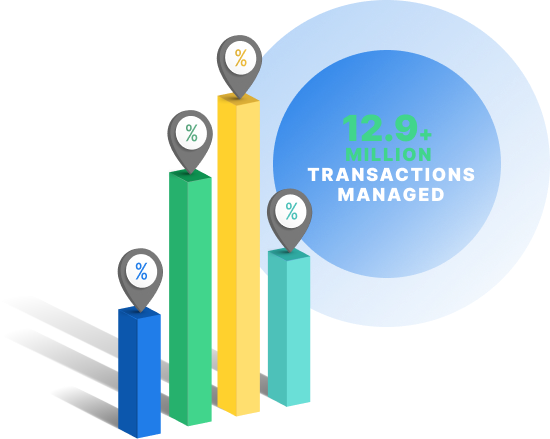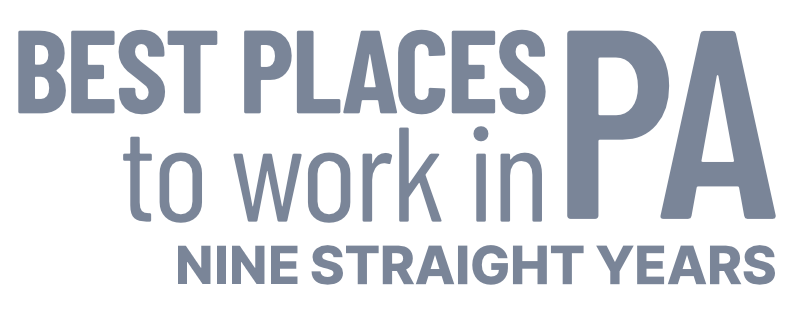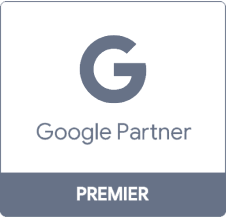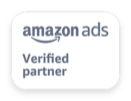What Is B2C PPC? Everything You Need to Know About PPC for B2Cs
B2C paid ads to drive up your revenue
Advertising is critical for any business, and the Internet is a fantastic place to do it. By displaying paid ads online, you can reach large audiences of people in multiple locations and convert them into customers for your business-to-consumer (B2C) company.
If you’re looking for a digital marketing strategy to drive fast results, reach a large audience, and propel conversions, pay-per-click (PPC) advertising might be your answer. Paid advertising is a fantastic tool for any B2C business looking to bring in more revenue.
Still, if you’re unfamiliar with paid advertising, you may be asking: What is B2C PPC, and why do you need it? Moreover, how can you get the best results from your PPC campaigns?
We’ll answer all of those questions below, so read on to learn more. Then subscribe to Revenue Weekly — our email newsletter — for more digital marketing tips from the B2C PPC agency with over 1,100 client testimonials!
What is B2C PPC?
B2C PPC — which, expanded to its full length, is called “business-to-consumer pay-per-click advertising” — is a form of paid digital advertising used by businesses to reach individual consumers. Basically, when you run a PPC campaign, you’re showing ads to people online.
Where do PPC ads appear?
PPC ads can appear in various places and on various websites, but they always consist of two parts — the ad itself and the landing page where it leads. The ad could look different depending on the format, but when users click on it, it takes them to a landing page that encourages them to convert.
Why do you need B2C paid advertising?
B2C paid ads can benefit your business in multiple ways. To start with, they’re excellent tools for converting people and driving purchases. You can directly advertise your products to just the right audience, especially when you use targeting settings to reach specific groups.
Even when you don’t convert people with your ads, though, they’re still fantastic tools for brand awareness. Someone might encounter your ads without having ever heard of you before, but after visiting the ad — or even just seeing it on the screen — they’ll know you exist, setting them up to take an interest in you later.
Types of B2C paid ads
Paid B2C ads can look different depending on which format they take, because there are several available. Search engines, websites, and social media all offer viable paid advertising outlets.
Here are the most common types of B2C paid ads!
1. Paid search ads
Possibly the most common type of PPC ad is paid search ads, which appear at the top — and sometimes the bottom — of Google search results. They look similar to organic search results, but they have an “Ad” label in the top corner.

To launch paid search ads, you can use Google Ads. Google Ads lets you target specific keywords with your ads, meaning that whenever people search for those terms, they’ll come across your ads — at least, if your ads are high-quality enough to achieve a high Ad Rank.
You also have to bid on the keywords you choose, which plays a role in determining which businesses will get to display their ads.
In addition to standard text ads, you can run carousel ads to show off specific products. Unlike the text ads, these ads feature images and usually have prices listed below them.
2. Display ads
As effective as it is to target people through Google searches, not everyone will find you in search results. That’s why you can also run display ads.
Display ads, also called banner ads, are ads that appear on third-party websites. They usually take the shape of a box or bar in the margins of the page, and they’re very visual. Some display ads feature an image with some text overlay, while others include moving graphics.

You can still use Google Ads to set up display ads on websites that are part of the Google Display Network. There are other networks where you can run ads, though none are as large as Google.
Furthermore, Google gives you a say in which websites you target, meaning you can focus on sites where you think your target audience will be.
3. Social media ads
Did you know that the average user spends 33% of their Internet time on social media? That makes social media a fantastic platform to advertise on. Most social media sites offer some sort of advertising options, including:
Social media ads can take different forms, but the most common type is in-feed ads. In-feed ads look similar to organic social media posts and appear right in users’ feeds. The difference between them and normal posts is that you’re paying to boost them into people’s feeds.

You can even target your social media ads to specific audiences. That allows you to reach new people who may not have discovered your social media page, but who are likely to be interested in you.
4 B2C paid advertising tips
Now that we’ve covered the PPC basics, it’s time to talk about how you can optimize your campaigns. You won’t get results just from pumping out ads with reckless abandon — you have to hone them in specific ways if you want to generate revenue with them.
To that end, here are four pro-tips for managing your B2C PPC ads!
1. Use negative keywords
We’ve already gone over how you can use keywords in your paid search ads to tell Google which searches to target. But did you know you can also tell Google which searches not to target? That’s the idea behind negative keywords.
Negative keywords are keywords you want Google to avoid targeting. You can list negative keywords in Google Ads, so your ads don’t appear for them.
Why might you want negative keywords? Well, let’s say you’re a home construction company, and you run an ad for the keyword “construction services.” Google might target variations on that keyword, including “skyscraper construction services.”
Unless you want a New York CEO calling you up about constructing the next Chrysler Building, that keyword isn’t relevant to your services. You only build homes, and only for individual consumers. By listing “skyscraper” as a negative keyword, you can prevent your ads from being wasted on an irrelevant audience.
2. Create custom audiences
When you set up paid ads in Google Ads, you have a variety of options at your disposal. One of those options is to create custom audiences, and it’s one you should definitely consider taking advantage of.
With custom audiences, you can select specific traits you want your ads to target. Those traits could be several things, including:
- Age
- Location
- Gender
- Occupation
- And more!
You can use this feature to create an audience that perfectly matches your ideal customer, and then set up your ads to exclusively target those people. So, if your target customer is a middle-aged man from Cincinnati, Ohio, you can plug each of those traits into a custom audience.
When you’re targeting a more relevant audience, it means your ads will be more successful at driving superior results for your marketing.
3. Use RLSA
Another feature Google Ads offers is remarketing lists for search ads (RLSA).
Remarketing is a form of advertising that focuses on people who have already visited your website or expressed an interest in you in some way. RLSA is a form of remarketing that specifically operates through paid search ads.
To use RLSA, you can set up Google Ads to track traffic to specific pages on your website. When people visit those pages, Google will start directing your ads to them in search results. You can achieve a similar effect for display ads and even social media ads.
The reason remarketing is so effective is that it’s targeting people who already have a clear interest in you. Ordinarily, many of the people who see your ads won’t be interested. But when you remarket to people, you’re advertising what they’ve already indicated they want.
The result is that remarketing has a tendency to drive far more successful results than regular marketing efforts.
4. Monitor results
You might think that once your B2C ads are up and running, you’re good to go. In reality, though, that’s just the beginning. If your PPC campaigns are to be successful, you have to consistently monitor their progress.
To do that, you can view metrics in Google Ads, such as conversion rate and click-through rate (CTR). Those metrics will tell you which ads are performing well and which ones need work. Once you know that, you can make all the necessary adjustments to improve your campaigns.
By continually making campaign improvements, you’ll hone your PPC to drive bigger and better results, ultimately leading to significantly more conversions and an overall boost in revenue.
Time to Level Up Your Sales
Our long list of services helps you grow every aspect of your business with marketing strategies that are proven to increase bottom-line metrics like revenue and conversions.
In the past 5 years, we’ve managed more than 14.9 MILLION transactions across our client base.

WebFX can propel your B2C paid advertising campaigns
Ready to start putting your own PPC campaigns into action? WebFX would love to help out! We have over 28 years of digital marketing experience, and you’d be hard-pressed to find another agency with as much expertise as we’ve developed over that time.
When you partner with us for our B2C PPC services, you’ll get help optimizing for all the tips listed above and more. You’ll even receive a dedicated account representative to keep you in the know about all the boosts we give your marketing.
To get started with us, just call 888-601-5359 or contact us online today!
Looking to earn more revenue from your PPC ads? Find what’s missing with a free PPC audit. Request yours today!
Related Resources
- What Are Google Ad Grants
- What Are Google Responsive Ads? (5 Things You Need to Know)
- What Are Negative Keywords
- What is B2B Digital Advertising?
- What is Click-Through Rate (CTR)? [Guide]
- What is CPC?
- What is Enhanced Cost Per Click (ECPC) and How Does It Work?
- What is PPC and Why Should You Use It?
- What is PPC Management? (And Do You Need It?)
Marketing Tips for Niche Industries
- Tourism/hospitality Statistics
- Treat More Patients with Healthcare Marketing Services
- Urgent Care Marketing Ideas: 5 High-ROI Tactics
- WebFX: Your Education Digital Marketing Agency
- Why Auto Part Retailers Need Digital Marketing
- Why Digital Marketing is Essential for Auctioneers
- Your Guide to Digital Marketing for Exercise Equipment Companies
- Vision Care Industry Statistics
- 10 Best Orthodontist Marketing Ideas to Earn More Patients
- 10 Digital Marketing Strategies for the Heavy Equipment Industry







